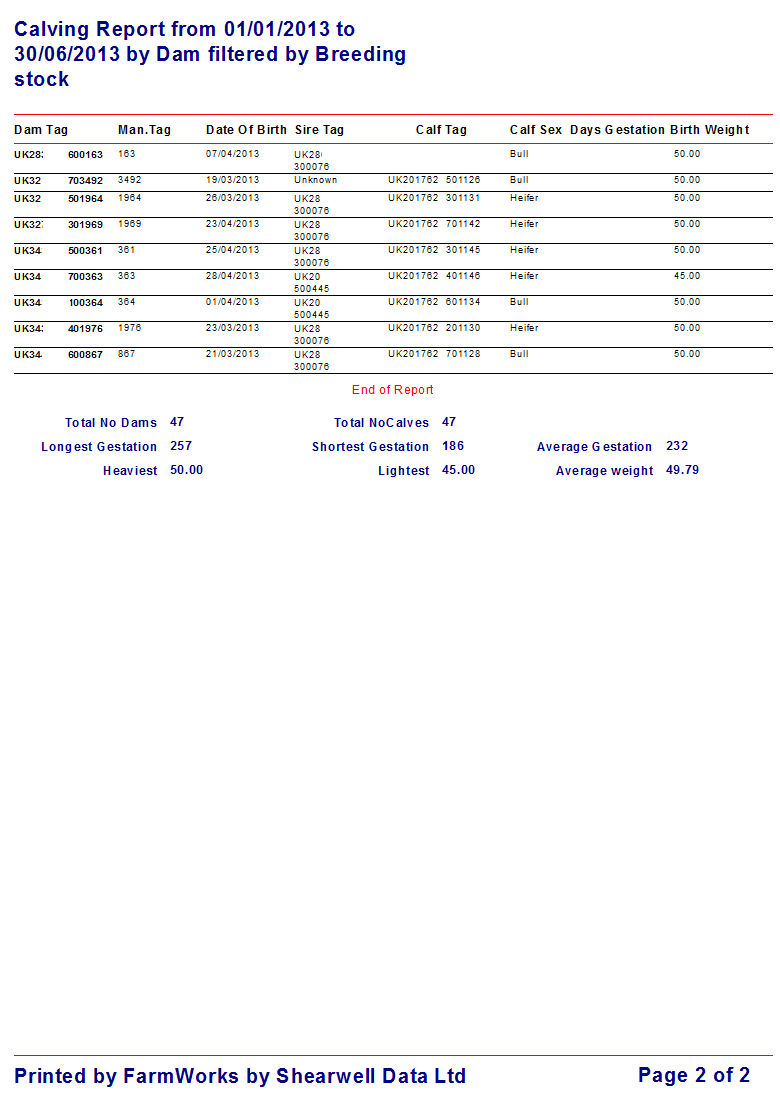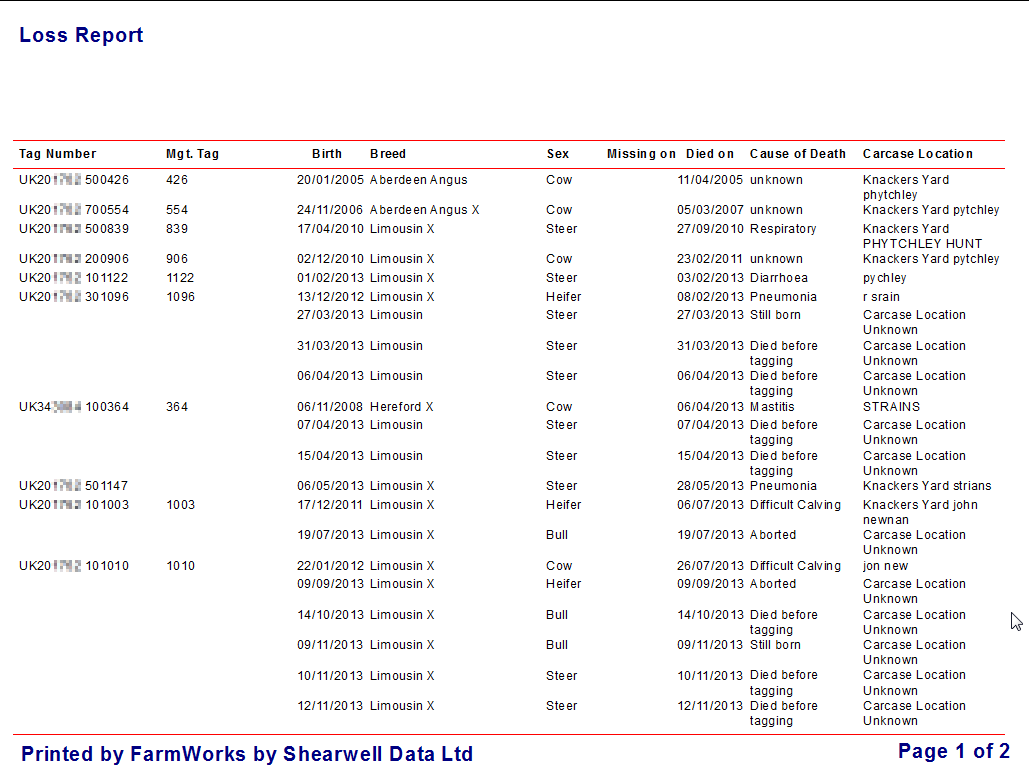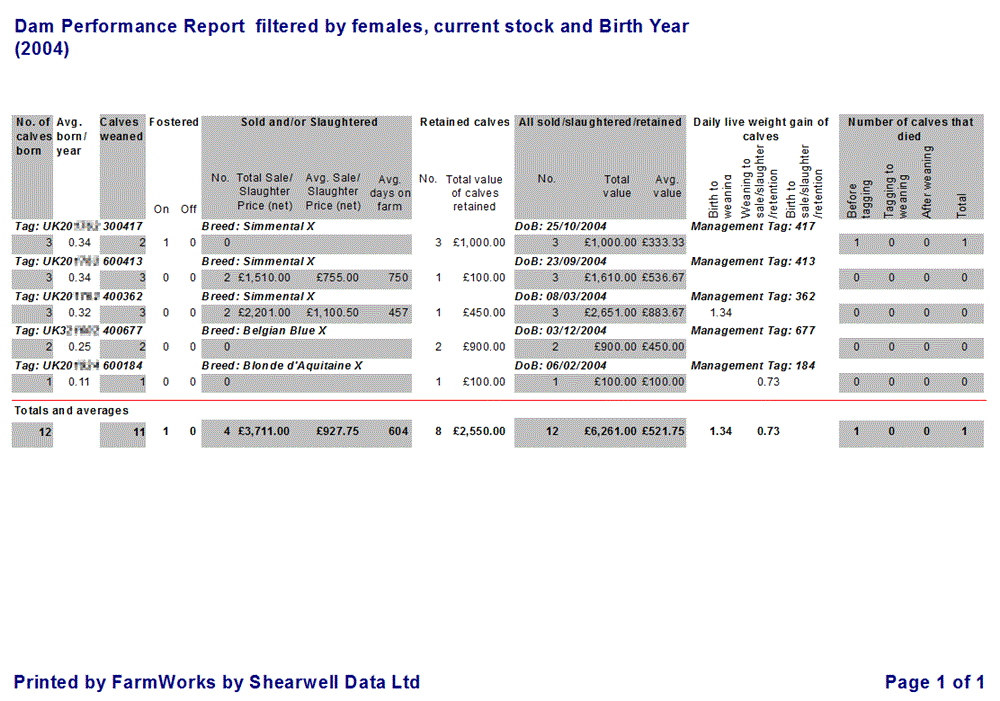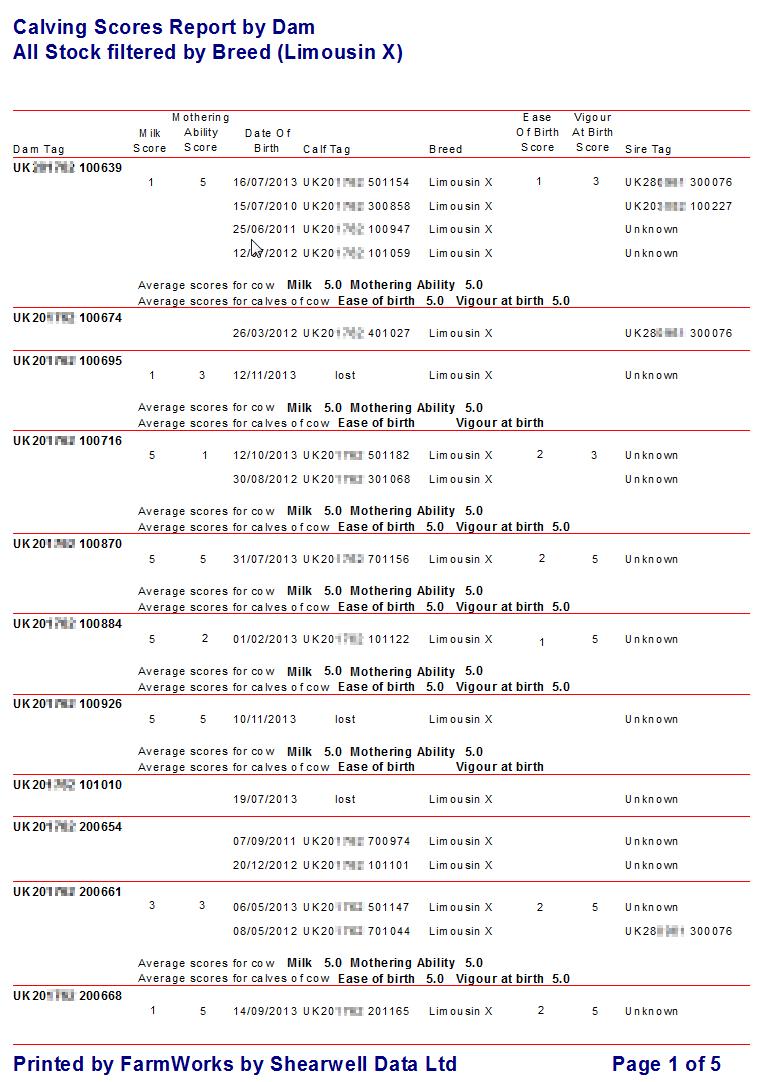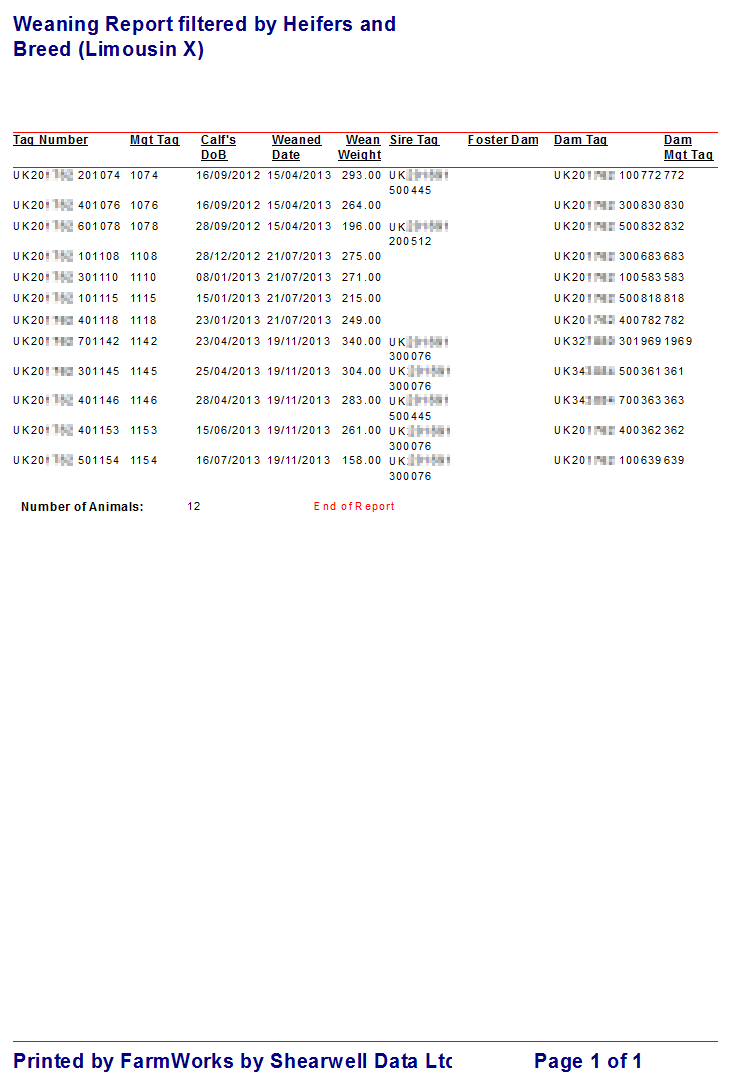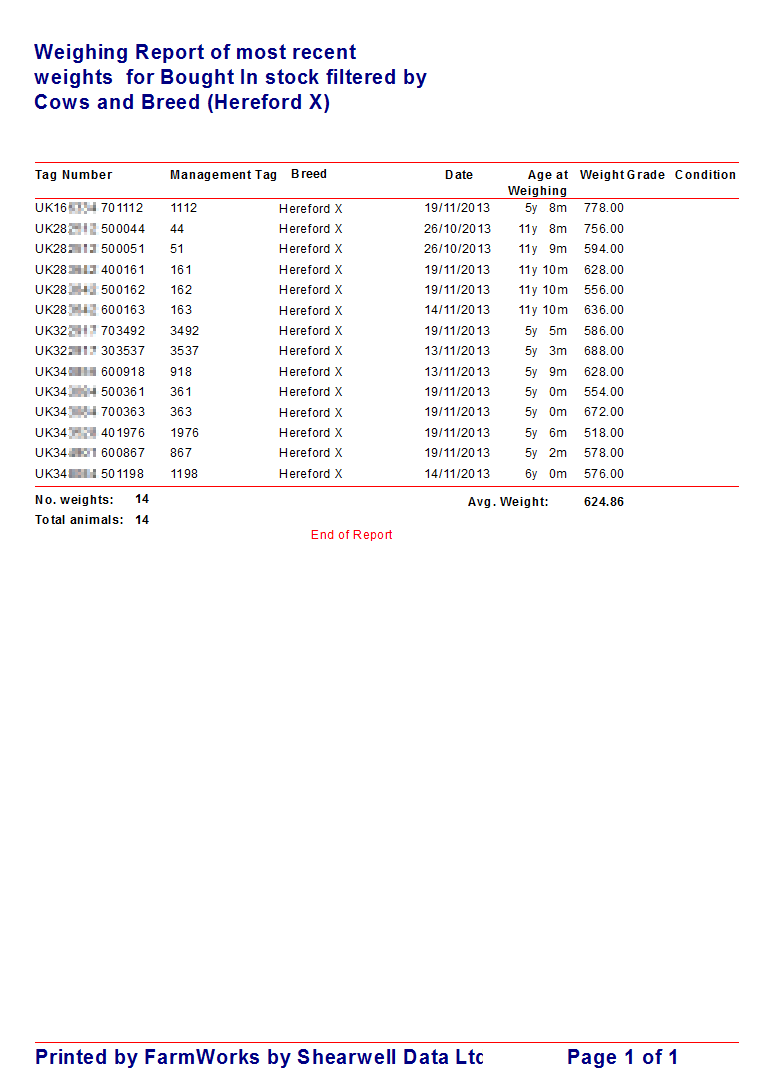A herd is made up of individual animals with a wide range of physical traits, from body size to growth rates, from fertility to sex drive, from milk production to mothering.
How well your animals perform is the expression of their genes. No amount of good feed and management can overcome poor genetics. The genetic merits of a breeding animal aren’t visible to the eye but they can be calculated through careful record keeping.
The more information you collect on each breeding animal, the more accurately you can make predictions about their offspring. Some qualities can be measured directly, like weight gain or calving interval. Some important traits, like milking ability, can only be evaluated indirectly by measuring calf weaning weights or calf survival.
Performance records are an objective way to compare animals within your flock so you can find those superior dams and sires. Genetic improvement happens when you only keep replacements from your top-performers.
Early season calving
Body condition will affect fertility so thrifty cows will be ready to breed sooner than their skinnier sisters. That's important because cows that conceive in the first cycle after the bull goes in will have heavier calves at weaning. Cows that conceive later in the breeding season extend your calving season and increase your work load when you could be getting on with other jobs.
If you select late-born heifers as replacements you risk keeping daughters from cows that are less fertile or less thrifty.
- In FarmWorks Classic, run a calving report filtered to show only the cows that calved in the first two cycles.
- Make a management group of their heifers as potential replacements.
- After weaning, run all the calves through the race and use the Stock Recorder drafting function to easily sort out the early-born heifers.
Calf survival
Dead calves leak away your profits – cows eat all year whether or not they wean a calf. To get a true picture of your death loss it’s important to record all the calves born, even the calves that die at birth, and any calves that die before weaning. (Click here to learn how to record a dead calf on the Stock Recorder.)
- In FarmWorks Classic, run a Loss report for dead calves.
- Filter by cause of death to look for trends or disease.
- If the death loss in your newborn calves is due to management (no shelter, thin cows, disease, etc.) then the sooner you see the problem the sooner you can repair it.
- If you are losing newborn calves because of mis-mothering then those cows should be identified and culled.
- In FarmWorks Classic, run a Dam Productivity report. Compare cows for calf deaths before tagging, between birth and weaning, and after weaning.
- Make a management group of cows that have lost an unacceptable number of calves before weaning.
- Put a comment on all of them to mark them as culls.
- When you are ready to market, run your cattle through the race and use the Stock Recorder drafting function to easily sort out the cows marked as culls.
Unassisted calving
Difficulty calving can have a number of causes, both genetic and management. Score your cows and calves on the Stock Recorder at birth to help eliminate those labour-intensive cattle. (Click here to learn how to use Calving Trait Scores on the Stock Recorder.)
- In FarmWorks Classic, make a management group of heifers you are considering as replacements.
- Run a Calving Scores report on those heifers.
- The heifers that needed assistance to be born, were weak at birth or needed help to suck could be eliminated as potential replacements.
- Show the sires on a Calving Scores report for calving difficulty, to identify any bulls whose daughters are prone to calving problems.
Selecting bulls for high growth rates can result in increased calf birth weights, leading to calving difficulties. Weigh your newborn calves to track birth weight trends from different bulls. (Click here to learn how to enter birth weights or set birth weight defaults on the Stock Recorder.)
- In FarmWorks Classic, run a weight report of birth weights for your calf crop, sorted by sire.
- Monitor whether certain bulls are throwing calves with unacceptable birth weights.
Weaning weights
Most of a calf’s weight gain from birth to 30 weeks of age is a reflection of the dam’s milk supply. After that, the calf's own genetics for growth will determine its weight gain, based on the feed you provide. Beef cow lactation peaks at around 125 days after calving and then declines steadily as the calf consumes more and more feed and forage.
Weigh your calves before the natural weaning point. (Click here to learn how to record weights on the Stock Recorder) Compare your cows on the weight of their calves to find your most productive individuals.
- In FarmWorks Classic, run a Weight Gain report to find the average daily live weight gain from birth to weaning of all the heifers.
- In FarmWorks Classic, run a Weight Gain report filtered to only show the heifers that had above-average daily live weight gain.
- Make a management group of those above-average heifers for possible retention as breeding stock.
- When you are ready to choose replacement heifers, run your calves through the race and use the Stock Recorder drafting function to easily sort out the calves to sell and the heifers to keep.
